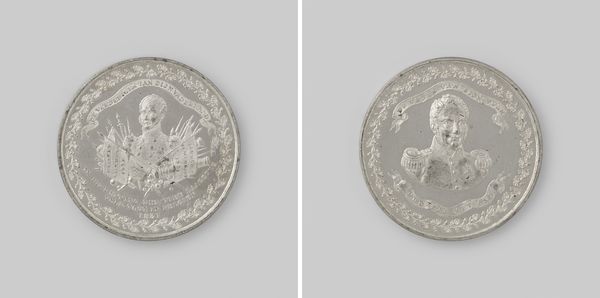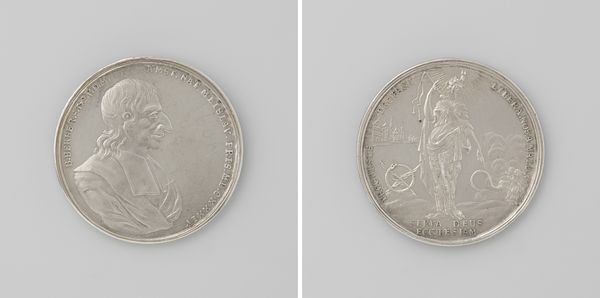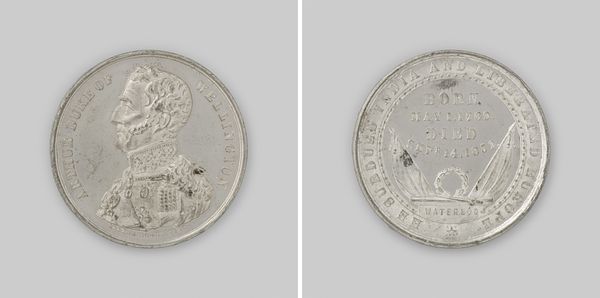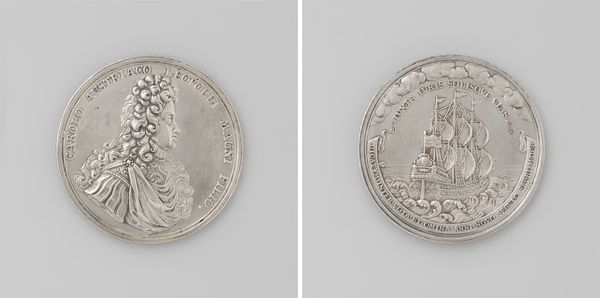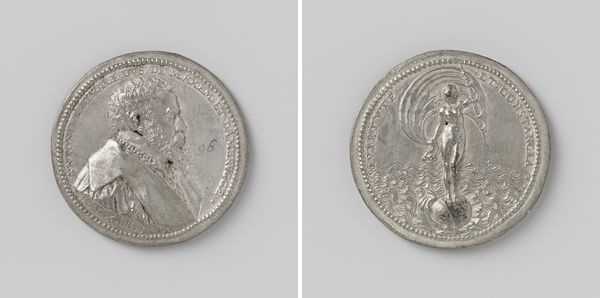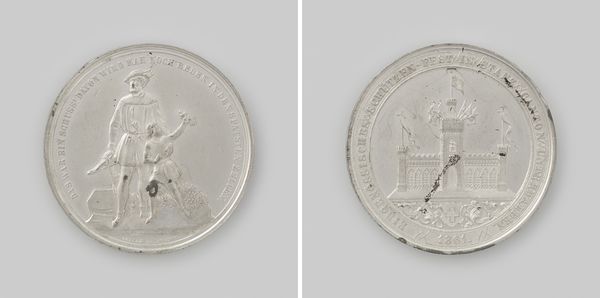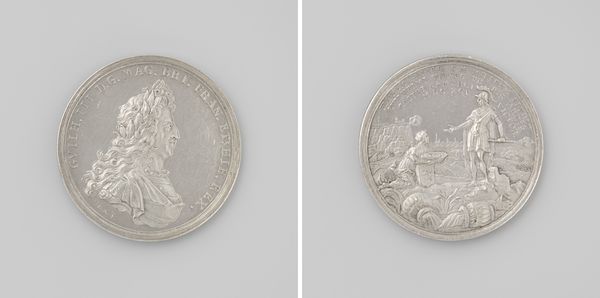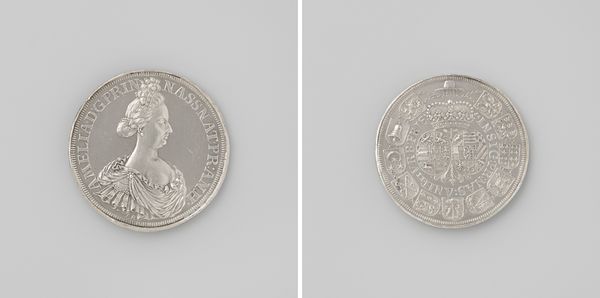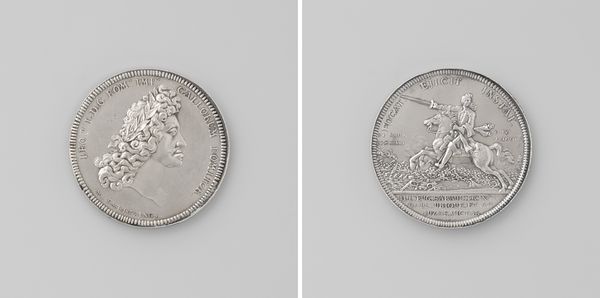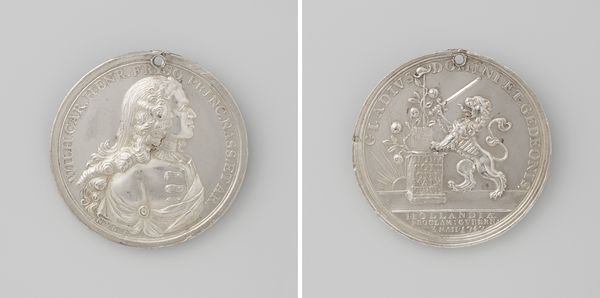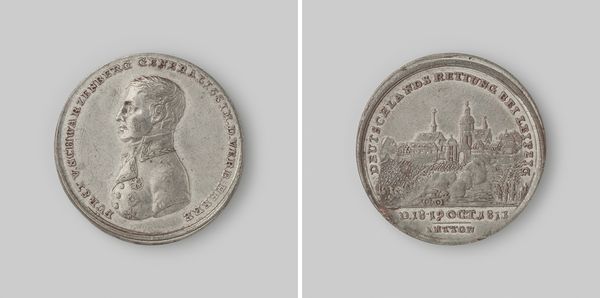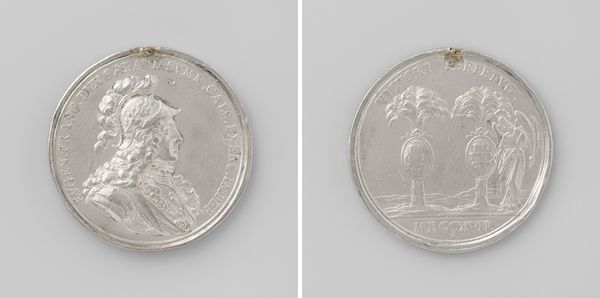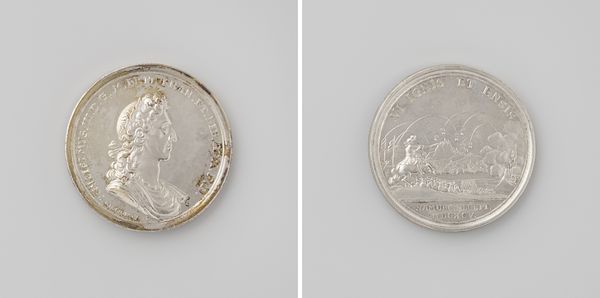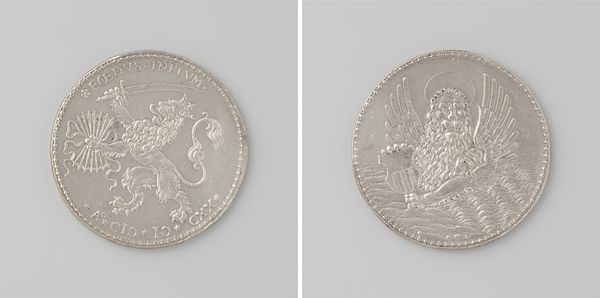
Huwelijk van Koningin Victoria van Engeland met Albert van Saksen Coburg Gotha 1840 1840
0:00
0:00
metal, sculpture, engraving
#
portrait
#
medal
#
metal
#
sculpture
#
romanticism
#
history-painting
#
engraving
Dimensions: diameter 2.7 cm, weight 5.73 gr
Copyright: Rijks Museum: Open Domain
Curator: This exquisite metal engraving is a commemorative medal produced by Allen & Moore in 1840. It celebrates the marriage of Queen Victoria to Albert of Saxe-Coburg and Gotha. Editor: It's striking, how flat it appears. The metal medium seems to constrain the relief, but the details are really sharp. Did they strike this or engrave it? Curator: That's a crucial distinction. It appears to be die-struck, a process reflecting the industrial prowess of the era. Mass production through mechanized processes! I'm particularly interested in how the medal utilizes potent symbolic imagery. Notice Prince Albert on one side, depicted in profile, and then on the reverse, what seems to be Britannia with industrial imagery. Editor: The juxtaposition is fantastic! You've got the portrait, the standard symbolic language for power, but then on the flip side, this idealized, somewhat clumsy, steam train belching smoke. It's "England's Pride" apparently. They're binding monarchy and modernity here in the means of production itself. The labor needed for making this reflects the broader landscape it depicts. Curator: Absolutely! The medal cleverly aligns Albert's personal destiny with the imperial and industrial destiny of Britain. The steam train specifically functions as a symbol of technological advancement, national progress, and the expansion of British power through trade and innovation. It suggests continuity, linking the present royal union to future prosperity. And note the somewhat clunky rendition -- it reminds the viewer of the awesome potential tamed through Victorian ingenuity! Editor: It’s such a neat object because it's both a personal memento and a piece of national propaganda. It's interesting that they chose this format. We’re consuming symbols but also actual material. Curator: The circulation of this object amplified its impact. Mass-produced medals made potent iconography available to a wider public, turning abstract imperial ideas into concrete, personal artifacts. It also becomes a means to build and propagate a British identity. Editor: That's fascinating. Looking closely really does unveil more than one might expect at first glance. I like that we're reminded how common materials become significant carriers of larger ideological agendas. Curator: Yes, the artistry of the material combined with its message shows us how power takes on so many shapes to propagate itself!
Comments
No comments
Be the first to comment and join the conversation on the ultimate creative platform.
